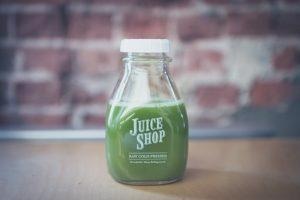In order to address the changing tastes and demand of consumers, the food industry is quickly innovating. New technologies, products, and processes are being introduced daily. ‘High-Pressure Processing (HPP)' is one of these inventions. It improves food safety as well as helping products last longer. If you have recently visited the supermarket, you may have noticed numerous ‘cold-pressed' juices, soups, and smoothies which have started to take up considerable shelf life. Being used increasingly across a variety of products, HPP is the technology used in these beverages.
What is High-Pressure Processing (HPP)?
HPP is a pasteurization technology which increases the shelf life of products. It does so by applying pressure to make microorganisms such as bacteria, mold, and yeasts inactive when compared to conventional thermal or heat based processing. This produces beverages or foods which are nearer to their ‘unprocessed’ or ‘fresh’ counterparts. The range of typical operating pressures is between 400 MPa and 600 MPa (58,000 – 87,000 psi) for a hold time of between 2 and 10 minutes, depending on the application of the product.
How Does it Work?
The permeability of microorganisms’ plasma membranes is affected by HPP and the disruption resembles the bursting of a balloon. Functionality is lost and ultimately cell death results when the damage is beyond repair. As a result of differences in the structure of their cell membranes and chemical composition, microorganisms have varying degrees of resistance against HPP.
Based on the fluidity of their membranes, Gram Positive bacteria are more pressure resistant than gram-negative bacteria. Temperature, pH, and food matrix also impact microbial inactivation in addition to processing parameters such as hold time and pressure applied.
What are the Product Requirements to Use HPP for Shelf Life Extension?
- pH: the use of HPP for the extension of the shelf life of products under Ph 5.0 has been validated by commercial and research applications.
- Storage and distribution temperature: presently, HPP is only validated for refrigerated products, although there is ongoing research for shelf stable application.
- Water activity: the products Aw must exceed 0.90 as water is needed to dissipate the pressure and enable microbial inactivation.
What Products Commercially Use HPP Today?
At the moment, this technology is used most widely for vegetable and fruit juices, RTE meats (deli meats), soups and purees, dips (guacamole, hummus, salsa), and seafood (HPP can enable the simple shucking of oysters and other crustaceans). HPP is also being used to extend the shelf lives of ready to eat meals, fresh sides, salad dressings, cut fruits, raw meats, and pet foods.

What are its Advantages?
- Food Safety: spoilage microorganisms such as Bacillus and Lactobacillus and vegetative pathogens such as Salmonella, Listeria monocytogenes, Escherichia coli are inactivated by HPP. It is able to provide the 5-log pathogen reduction which is needed for refrigerated products, however, it doesn't inactivate spores (e.g. spores of Clostridium botulinum).
- Better sensory attributes: Pressure based processing is more effective than heat-based processing at preserving the textures, aromas, and colors of beverages and food.
- Better nutritional composition: Numerous nutrients are heat sensitive, undergoing degradation with conventional thermal processing techniques. These heat-sensitive nutrients are able to be preserved with HPP, which enhances the products' functionality.
- Clean Label: The need for preservatives (chemical or natural) is negated by this technology’s ability to preserve products and increase their shelf life.
- Versatile use of Equipment: The required processing equipment is independent of the type of product and sample volume, as water present in these products enables the uniform exertion of pressure regardless of the geometry of the product. This ensures the same HPP machine is able to be used for different product types.
What are its Limitations?
- Cost and Efficiency: HPP is limited to either a semi-continuous operation requiring manual aid to facilitate the loading and unloading of products or batch processing. This reduces efficiency and increases costs.
- Type of Packaging: The packaging of HPP must be either flexible or semi-rigid. This is because compressibility is needed in order for pressure to be applied to the product and for the package to keep its form after processing.
- Types of Products: HPP is not able to be applied to highly aerated products, dry products, shelf-stable products, or high pH products.
Due to the variety of benefits it offers, HPP is being widely applied in the food industry currently. One of the problems that brands most commonly face when taking their HPP products to market is making sure the labeling is right. In the past, the correct labeling of HPP products has been debated widely, particularly in regards to the use of the words ‘fresh' and ‘raw' in smoothies and cold-pressed juices.
As a result of using the word ‘raw' in their juices, a few years ago Suja LLC was involved in a lawsuit. Increasingly, food startups are consulting with food scientists to help both with labeling and getting their products on the market.

Plenish Cleanse (UK), Evolution Fresh (Starbucks), and Naked Juice (owned by PepsiCo) are some of the brands which are currently using HPP to make juices or smoothies. A TechNavio report of 2017 forecast that the “global cold pressed juices market will grow steadily during the next four years and post a CAGR of over 8% by 2021”. Given the rate of uptake of HPP within the industry, it seems as though this technology is here for the long term.

This information has been sourced, reviewed and adapted from materials provided by Kolabtree, originally written by Spurti Ravi. Spurti Ravi is a Food Scientist with a B.E. in Biotechnology from India and M.S. in Food Science from Rutgers University, NJ, USA. She has 7 years of experience conceptualizing, developing and commercializing natural food products and beverages. She currently runs her own company in Bangalore, India.
For more information on this source, please visit Kolabtree.